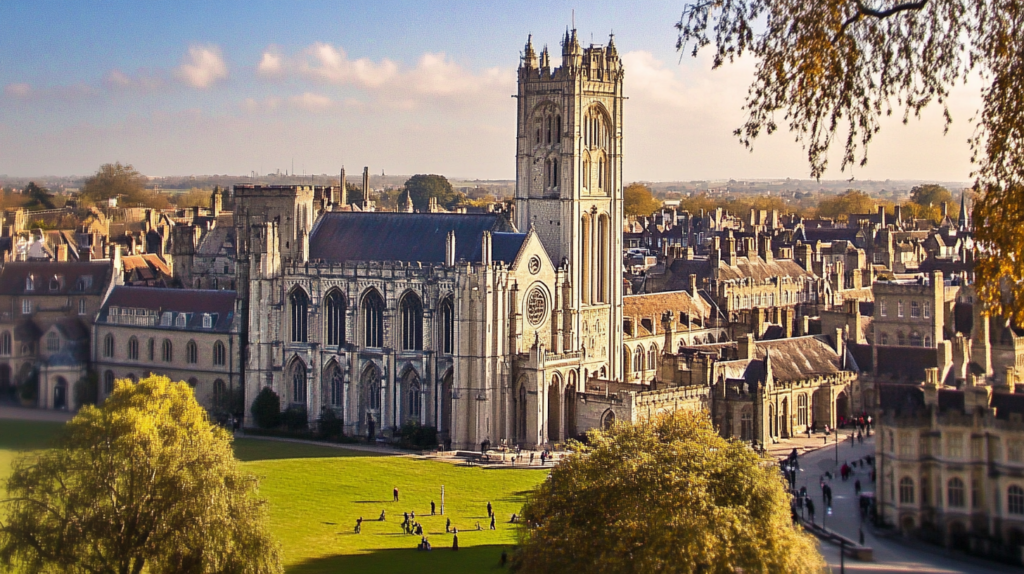
Kent: The Garden of England
Kent, often referred to as the “Garden of England,” is a county that seamlessly blends natural beauty, rich history, and modern innovation. Located in the southeastern corner of the UK, Kent is bordered by the English Channel to the south, offering stunning coastal landscapes and a vibrant maritime culture. Today, Kent is a place where tradition meets progress, with its fertile lands, historic landmarks, and dynamic communities shaping its identity.
The Orchard of England: Agriculture and Innovation
Kent’s fertile soil and temperate climate continue to earn it the nickname the “Orchard of England.” The county is renowned for its lush orchards, which produce an abundance of apples, pears, cherries, and other fruits. Kent’s agricultural industry remains a cornerstone of its economy, with cider production playing a central role. Traditional cider-making techniques are still celebrated, while modern craft cider producers are pushing the boundaries of flavor and innovation.
In recent years, Kent has also emerged as a leading wine-producing region in the UK. The county’s vineyards, particularly in areas like the North Downs and the Weald of Kent, have gained international acclaim for their high-quality sparkling wines, often compared to those of Champagne. The Chapel Down and Gusbourne estates are among the most celebrated, offering wine tours and tastings that draw enthusiasts from near and far. Kent’s wine industry is a shining example of how the county continues to innovate while honoring its agricultural roots.
The White Cliffs of Dover: An Icon of Natural Beauty
One of Kent’s most iconic landmarks is the White Cliffs of Dover, towering chalk cliffs that rise dramatically above the English Channel. These cliffs are not only a symbol of England’s natural beauty but also a testament to its enduring resilience. Today, the cliffs attract visitors from around the world, offering breathtaking views, scenic walking trails, and a connection to the county’s maritime heritage. The nearby Dover Castle, known as the “Key to England,” adds a layer of historical intrigue to this stunning coastal landscape.
Dover: Gateway to Europe
Dover, Kent’s historic port town, has long been a vital link between Britain and the continent. Known as the “Gateway to Europe,” Dover’s seafaring tradition dates back centuries, with its port serving as a hub for trade, travel, and military operations. Today, Dover remains one of the busiest passenger ports in the world, with ferries departing regularly for destinations such as Calais and Dunkirk in France. These ferries are a lifeline for tourists, commuters, and freight, connecting the UK to mainland Europe with efficiency and ease.
In addition to its ferry services, Dover is home to the Channel Tunnel (often called the “Chunnel”), one of the most remarkable engineering feats of the modern era. Opened in 1994, the tunnel stretches 31 miles beneath the English Channel, linking Folkestone in Kent to Coquelles in northern France. The Channel Tunnel has revolutionized travel between the UK and Europe, with the Eurostar high-speed train and Le Shuttle vehicle transport service offering fast, convenient, and eco-friendly alternatives to air travel. Dover’s strategic location and world-class infrastructure continue to make it a cornerstone of international connectivity.

Canterbury: A City of Faith, History, and Modernity
At the heart of Kent lies the historic city of Canterbury, home to the magnificent Canterbury Cathedral. This UNESCO World Heritage Site, with its awe-inspiring Gothic architecture and rich history, remains a center of Christian pilgrimage and a symbol of England’s spiritual heritage. Today, Canterbury is a vibrant cultural hub, blending its medieval charm with modern amenities. The city’s bustling streets are lined with independent shops, cafes, and restaurants, while its thriving arts scene and prestigious University of Kent attract students and visitors from across the globe.
Sandwich: A Town of Charm and Culinary Legacy
Nestled along the River Stour, the picturesque town of Sandwich is one of Kent’s best-preserved medieval towns. With its narrow streets, timber-framed buildings, and rich history, Sandwich offers a glimpse into England’s past while maintaining its relevance today. The town’s name is famously associated with the beloved sandwich, a culinary invention attributed to John Montagu, the 4th Earl of Sandwich, in the 18th century. While the exact origins of the dish are debated, Sandwich’s connection to this global favorite adds a touch of whimsy to its historical charm.
Today, Sandwich is a thriving community known for its historic buildings, such as the Sandwich Guildhall and St. Peter’s Church, as well as its proximity to the coast. The town’s annual events, including the Sandwich Festival and Medieval Fayre, celebrate its heritage and bring the community together.
A County of Contrasts and Charms
Kent is a county of contrasts, where the timeless beauty of the White Cliffs of Dover and Canterbury Cathedral coexists with the bustling activity of its orchards, vineyards, and modern towns. Its agricultural industry, particularly its cider and wine production, reflects its ability to adapt and innovate while honoring tradition. Meanwhile, towns like Sandwich add a layer of cultural and culinary significance to Kent’s rich tapestry.
Dover’s seafaring tradition and its role as a gateway to Europe, through both ferries and the Channel Tunnel, highlight Kent’s enduring importance as a bridge between nations. Whether standing atop the White Cliffs, exploring Canterbury’s ancient streets, savoring a glass of locally produced wine, or enjoying a sandwich in its namesake town, visitors and residents alike can experience the enduring spirit of the Garden of England. Kent’s unique blend of natural wonders, historical landmarks, and contemporary vitality makes it a quintessential part of England’s identity.